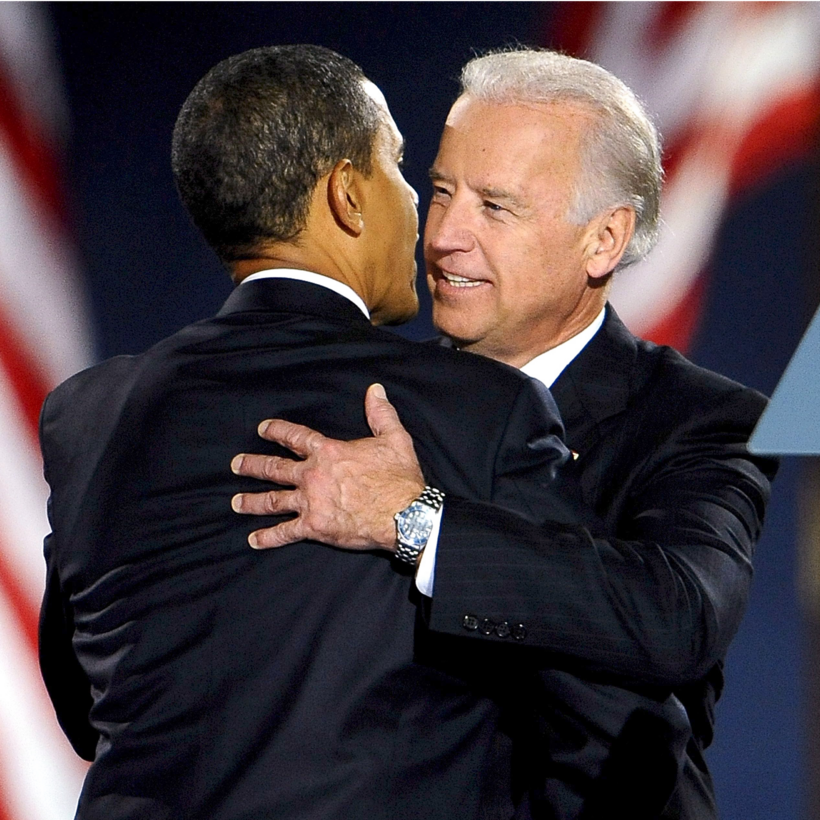It took about a day after Joe Biden was finally declared the winner of the 2020 presidential election for one particular story line to grate on me. I heard it everywhere, occasionally stated outright and sometimes just in the subtext of the TV chatter and op-eds: the commentariat seemed convinced that Biden would restore the Barack Obama years. Welcome to the third term!
It wasn’t just that I knew this was an incomplete—maybe outright inaccurate—way to look at the incoming Biden administration. I also knew that it wasn’t how Biden, or most of the people he worked with, saw their task ahead. The truth was significantly more complicated, both because of all that had changed during the Donald Trump years, and also because there had never been anything straightforward about the Obama-Biden relationship.
For years, their bond had been held up as a one-of-a-kind political “bromance.” There was even a pair of Obama-Biden mystery novels sold to nostalgic liberals once they left office. (“An escapist fantasy,” reported the Times.) In some ways, that description was fair, if politically advantageous, for the duo. Biden and Obama worked to present a united front between two men who couldn’t have seemed more different when they first met, in 2004. They called each other “brother,” hugged often, and made sure everyone knew that they lunched privately each week.
Their personal bond was far closer than any other between a president and V.P. in modern history. After leaving office, Biden even sometimes displayed a copy of Hope Never Dies, the first mystery novel, on his coffee table for guests to see. And their relationship was in a different category entirely compared with the ties between incumbents and former presidents.
Barack Obama and Joe Biden called each other “brother,” hugged often, and made sure everyone knew that they lunched privately each week.
But even before setting out to report my book, The Long Alliance: The Imperfect Union of Joe Biden and Barack Obama, a look at their two-decade political and personal partnership, it was clear to me that their relationship was far more layered than this surface-level story suggested. Biden never once visited the White House residence while Obama lived in it. Though both were avid golfers, they almost never spent any time on the course together.
More consequentially, their views of political change had obviously differed at important moments during their shared time in the Senate, on the campaign trail, and especially in the White House. They came from entirely different generations and cultures, and some of their disagreements about policy decisions had made it out into the open.
During Obama’s presidency, Biden was restless and skeptical about the push for Obamacare and his boss’s decision to ramp up the war in Afghanistan before winding it down. That was all before the 2016 presidential election, when Obama had effectively chosen Hillary Clinton, not Biden, to be his successor.
During the Trump years, they talked about the disaster in the White House in notably different ways. Biden often called the president an aberration whereas Obama came to see him as a product of the Republican Party’s decades-long warping process.
After Biden won the 2020 election, I heard that he had been bristling at the popular notion that he would just pick up where Obama had left off. He’d want to build on his predecessor’s progress, but he had plenty of ideas of his own. Biden had been thinking about running for president since the 1970s, after all.
Biden never once visited the White House residence while Obama lived in it.
Still, I knew the two had been talking behind the scenes. Obama advised Biden on how to build his Cabinet when the incoming president asked for help, and the two would just chat on the phone a whole lot more than the public ever knew.
I knew the true story of this relationship deserved to be told. In its contours, we can reach a fuller understanding of the Biden administration as well as gain deeper insight into the Obama years, Democrats’ reaction to the Trump era, and the institution of the modern presidency.
Writing the book over two years, as I spoke with hundreds of their friends, colleagues, frenemies, eyewitnesses, associates, and negotiating partners, I came to appreciate that their bonds were both significantly tighter and far more intricate—and often precarious—than we knew. Almost immediately, it became clear that their relationship and its under-appreciated quirks have shaped not just their own administrations and party but Trump’s too, as well as recessions, wars, and four (soon five) presidential elections.
Nearly halfway through Biden’s first term and two decades into their time molding each other’s worlds, both Biden and Obama have had time to consider that while their soaring highs together were visible, the tense lows were usually private, personal, and often far harder to untangle. Still, neither will ever allude to this fact in public. Nor will they discuss the thinking they’ve both done about their joint and individual legacies during a time they’ve both agreed to be a dangerous political inflection point. That’s why I wrote The Long Alliance.

Gabriel Debenedetti is the national correspondent for New York magazine. His new book, The Long Alliance: The Imperfect Union of Joe Biden and Barack Obama, will be published September 13 by Henry Holt


